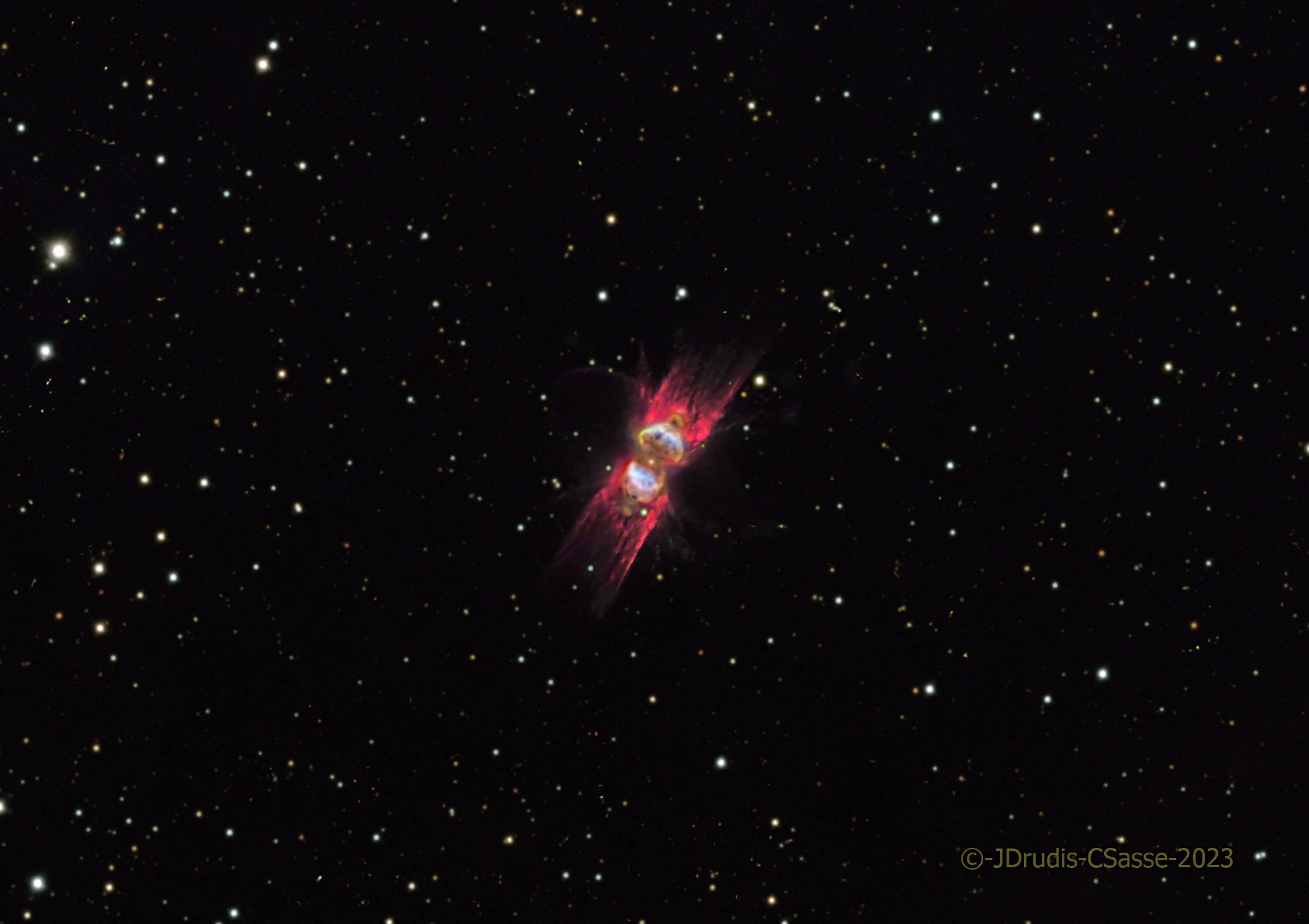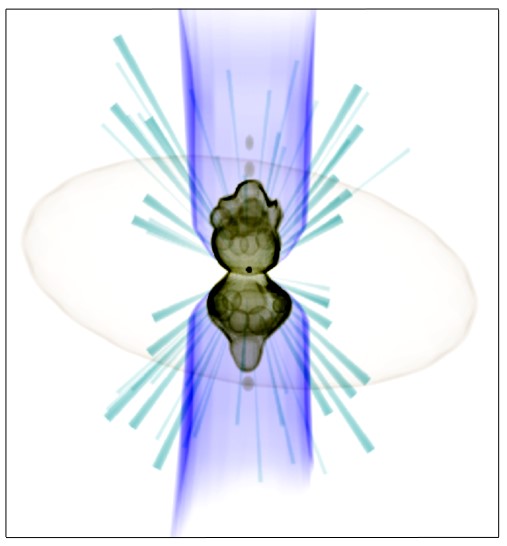Click on the image for a full resolution version
 See this image also on Instagram
See this image also on Instagram
Planetary nebulae are some of the most captivating and intriguing celestial objects in our universe. Among this diverse family of cosmic wonders, the planetary nebula Mz 3, also known as the Ant Nebula, stands out as a unique and enigmatic specimen. Located in the constellation Norma, approximately 8,000 light-years from Earth, Mz 3 beckons astronomers with its complex structure, vibrant colors, and mysterious origins.
Mz 3’s distinctive appearance is characterized by two nested, hourglass-shaped lobes that appear to cradle a central star. This central white dwarf star, a dying sun-like star, is in the process of shedding its outer layers, creating the stunning visual spectacle we observe today. The complex geometry of Mz 3’s lobes is thought to be the result of multiple ejection episodes during the star’s evolution, each expelling material into space in a slightly different direction.
One of the most captivating features of Mz 3 is its striking coloration, which is primarily due to the presence of ionized gases. The brilliant blues and reds seen in this planetary nebula are indicative of oxygen and hydrogen emissions, respectively. The central star’s intense ultraviolet radiation ionizes the surrounding gas, causing it to emit these vibrant hues as it cools. This nebula is pretty young, being its age, according to the literature, about 650-670 years.
The complex structure of Mz 3 was studied and published in 2018 by N. Clyne et al. They developed a 3D model (see below) of this planetary nebula in which its three distinct kinds of bipolar lobes were present (a closed one around the center, as well as a cylindrical one and a conical one, here depicted in greenish-grey, blue and light blue respectively). In our image, all three kinds of lobes are easily visible. This image was taken with narrowband filters (Ha, [OIII] and [SII]) and the stars were taken as usual with RGB filters. The final image is the result of mapping the colors to a natural palette, but, in order to better enhance the fine structure of the central lobe, a partial mix with the same image mapped following the Hubble palette was inserted.
Additional Information
Object
Name(s): Mz3. Menzel 3. Ant Nebula. PN G331.7–01.0
Type: Planetary Nebula
RA: 16h 17m 13s
Dec: -51º 59’ 10”
Constellation: Norma
Size (arcmin): 50×12 arcsec
Magnitude: +13.8
Distance: 8,000 ly
Image
Date: 2023-03-09 to 2023-03-21
Location: Obstech, Río Hurtado, Chile
Size (arcmin): 7×5 arcmin
Telescope: 24” f/6.5 Reflector
Camera: QHY 461 (11760x8896pix)
Guiding: off-axis guider
Total exposure: 25h 10m (Ha: 11h 30m; [OIII]: 6h 40m; [SII]: 4h; RGB: 3h)
Processing: CCDStack, PixInsight (one process) and Photoshop CC 2023

